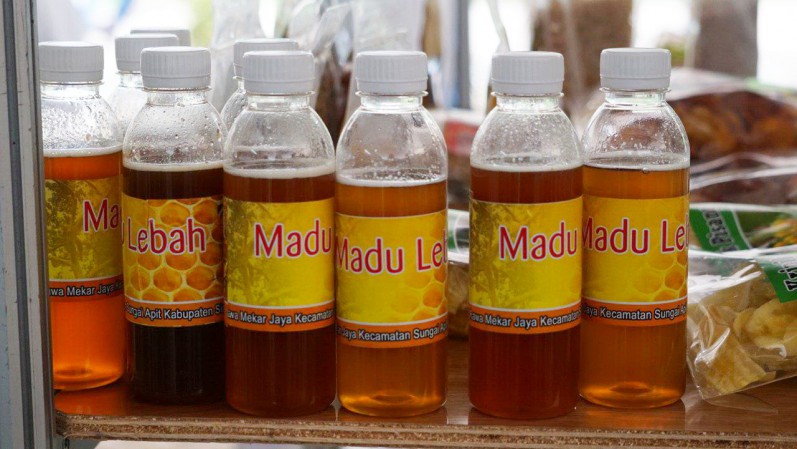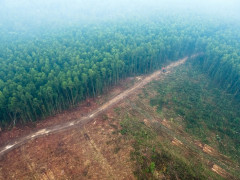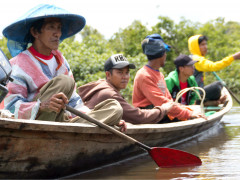Third Annual JMGR Conference: Protect Peat to Improve Community Welfare
By Admin Pantau GambutCelebrating Humanity through Local Products at the 2018 National Peatland Jamboree

At the 2018 National Peat Jamboree in Kiram village in South Kalimantan yesterday, there were many creative products on display, all grown in peatlands. Peatland is often considered dormant and unproductive. However, it is a source of hope for many peatland communities, especially after the massive fires of 2015.
"Celebrate Peat, Restore Humanity" proclaimed the white shirts of 2018 National Peat Jamboree participants from all over Indonesia. This year's jamboree presented a series of events and exhibitions that showed visitors the importance of peat preservation. Dozens of booths crowded the exhibition area, offering raw and processed products from eight peatland restoration priority provinces.
Walking from one booth to another, I never tired of seeing the regional creativity on display in the diversity of peatland products. It never occured to me that water buffalo milk or sago-based products could be processed into sugar for daily consumption. With more than 300 total products, there were food products made from coffee, honey, bananas, cassavas, pineapples, and more. The Peat Jamboree was also a haven for craft lovers. Beautiful woven products made from rattan and purun brightened storefronts with patterns of natural dye. There were even woven products decorated with decoupage techniques, which definitely increased their sale value.
Peatland is often underrated, because people think it is unproductive. Apparently, however, peatland is a source of hope for many peatland communities, especially after the massive fires of 2015, which disrupted education, health, and employment opportunities. In the aftermath of these fires, public awareness of the importance and hidden potential of peatlands has increased, particularly after the establishment of the Peat Restoration Agency (BRG) by the President in 2016.
With their aim to place village facilitators in hundreds of Peat Care Villages by 2020, BRG is attempting to optimize peatland-grown products through capacity development, quality control, packaging, and promotion. One initiative that caught my attention was the establishment of a legal agency called Rawang by village facilitators in South Sumatra to assist with the packaging, promotion and distribution of local products. Previously, local people had sold their products to middlemen at below market prices.
Community success stories were proudly showcased at the 2018 Peatland Jamboree. However, to achieve the restoration target of 2 million hectares and include villages in peatland areas, the government must move actively replicate community-level initiatives on a larger scale. Ongoing efforts to improve coordination among ministries, agencies – including the Peat Restoration Agency (BRG), the Ministry of the Environment and Forestry, the Ministry of Villages, Disadvantaged Regions and Transmigration, the Ministry of Foreign Affairs, and the Ministry of Industry – and the private sector is required to develop innovative funding schemes and business models. The hope is that peat restoration will not only restore the humanity of peatland communities within a five-year commitment to restore 2 million hectares of peatland, but also remain sustainable thereafter.



